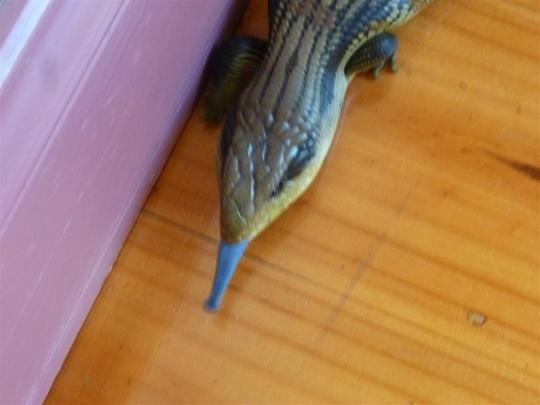Redback spider
At the risk of reinforcing the image of Australia as a land of scary and poisonous beasties, today’s post is about the Redback Spider (Latrodectus hasselti) a classic poisonous Australian beastie.

Ulike the other garden spiders that went racing off when disturbed today, the Redback sat very still for some time.
Today I found a Redback minding it’s own business against a sheltered brick wall (at least it was sheltered until I came along and exposed it with a spot of overdue weeding) in our front yard. It was a perfect little Redback hangout (until the cover was removed) as it is a very dry, sheltered and warm spot.
Now, I have to admit, if I sound nonchalant about discovering a poisonous spider millimeters from my hand, I’m faking it. I am quite the arachnophobe, but am respectful of these creatures that are as much a part of the natural environment as any pretty butterfly or bird. Besides, I am only likely to get hurt by a redback if I’m a) not wearing my gardening gloves and b) not looking where I put my hand. They just won’t come looking for you – you have to blunder into their direct path, which is quite a relief but still cause for caution.
According to the Australian Museum a Redback will struggle even to give you a decent bite. Still, you won’t find me testing the theory as if they do bite it is potentially fatal and at the very least very painful. Luckily antivenom is widely available and there has not been a reported death in recent years.
Another cautionary note is that they generally live close to humans as they love nothing better than a nice comfy shed, hollow garden ornament, sheltered garden wall or, quite infamously, a cosy spot under an outdoor toilet seat.

Because this spider is black (rather than light brown) comparatively big and has some white on the abdomen, I'm guessing she is an immature female based on information from the CSIRO's website.
Weirdly, I was well and truly an adult before I realised that we had Redbacks in Victoria. At some stage in my youth someone told me that they aren’t found in our state and I ignorantly took them at their word. You could imagine my shock when the first one I saw was one revealed by my then preschool daughter playing in the garden. She picked up a ceramic garden ornament and looked inside to find a very brightly coloured little spider which she promptly came to show me. I managed to respond appropriately without screaming. Just.

In case my photos made you think she is gigantic, here is some better perspective. those are a couple of common garden snailsalso flushed from cover, so you can see the Redback is really quite small.
Many will know that the Redback has a very close cousin in the American Black Widow spider and has cousins in New Zealand and other parts of the world too. Ours just come with racing stripes. The Brisbane Insects website has quite good observations about the Redback if you can stand more creepy crawly info.
Personally I’ve freaked myself out quite enough, so I will leave you with one last photo and wish you a Happy and Safe Easter.
Heidi.












